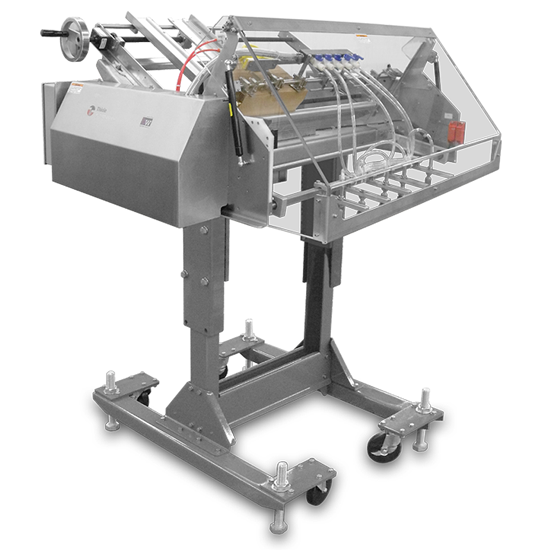
Tray denesters play a crucial behind-the-scenes role in various industries, yet they often go unnoticed due to their simple yet efficient function. These machines are designed to automate the process of dispensing trays, helping streamline production lines and enhance overall efficiency. In this article, we will delve into the key aspects of tray denesters, their working principle, applications, benefits, and their significance in modern manufacturing.
Working Principle
A Tray denester, also known as a tray dispenser, is a mechanical device designed to separate and dispense trays from a stack. It utilizes a combination of mechanical components, sensors, and often pneumatic or servo-driven systems to achieve its function. The machine detects the presence of a stack of trays, separates the top tray from the stack, and accurately positions it on a conveyor or platform for further processing.
Applications
Tray denesters find applications in a wide range of industries, including food and beverage, pharmaceuticals, electronics, and packaging. In the food industry, they are commonly used for preparing ready-to-eat meals, packaging bakery products, and assembling food trays in cafeterias.
In the pharmaceutical sector, tray denesters assist in accurately positioning medical devices or packaging for further processing. They are also employed in electronics manufacturing to handle delicate components.
Benefits
The integration of tray denesters into production lines offers several benefits
1. Increased Efficiency
By automating the process of tray dispensing, these machines significantly boost production line efficiency, reducing the need for manual labor and minimizing production bottlenecks.
2. Accuracy
Tray denesters ensure precise tray placement, which is vital in industries where alignment and precision are crucial for subsequent processes.
3. Cost Savings
Although the initial investment in a tray denester might be significant, the long-term cost savings from reduced labor and increased productivity can be substantial.
4. Hygiene and Safety
In the food and pharmaceutical sectors, maintaining hygiene is paramount. Tray denesters minimize the risk of contamination that could occur during manual tray handling.
5. Flexibility
Many modern tray denesters offer flexibility through adjustable settings, making it easy to switch between different tray sizes and materials.
Significance in Modern Manufacturing
In today’s fast-paced manufacturing landscape, automation is key to staying competitive. Tray denesters play a crucial role in achieving this automation by eliminating repetitive manual tasks and ensuring consistent production quality.
They contribute to smoother operations, shorter production cycles, and reduced error rates. Additionally, as industries continue to prioritize worker safety and hygiene standards, the implementation of tray denesters aligns with these goals.
Considerations and Future Trends
When considering the integration of a tray denester into a production line, factors such as tray size, material, production volume, and available space should be taken into account. As technology advances, tray denesters are likely to become even more adaptable, energy-efficient, and capable of interfacing with other smart manufacturing systems. You can also know about multihead weigher packing machine.
Conclusion
Tray denesters might not be the most glamorous machines in modern manufacturing, but their impact is undeniable. From enhancing efficiency and accuracy to promoting safety and hygiene, these devices play a vital role across various industries. As manufacturing continues to evolve, the role of tray denesters will remain pivotal in shaping streamlined and automated production processes.

